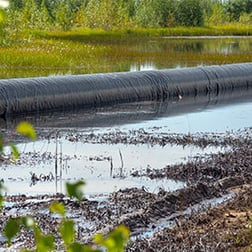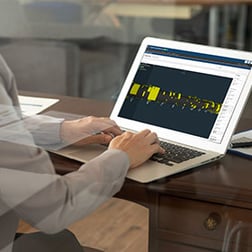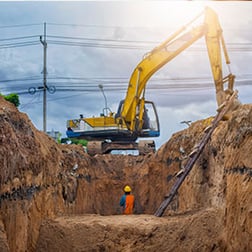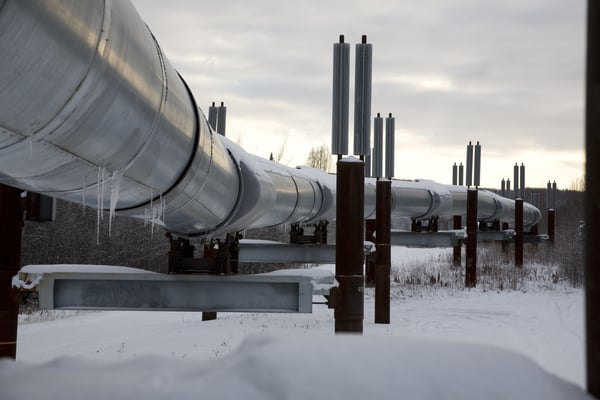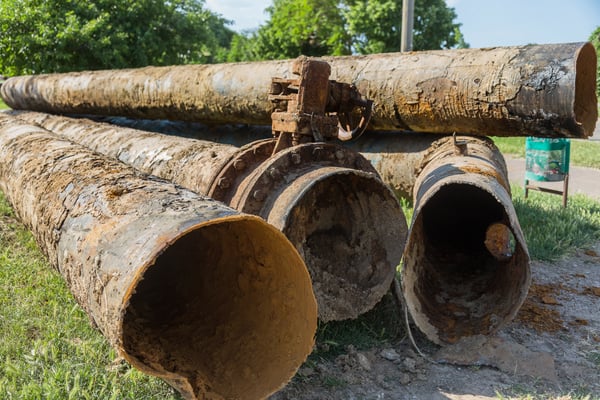OneBridge Solutions
OneBridge Helps Pipeline Operators Comply with Mega Rule 2
It’s been 10+ years since the San Bruno pipeline tragedy gave rise to PHMSA’s Mega Rule and just a few short months since the regulator finalized the rule in August 2022. Many operators have already taken strides to incorporate the early requirements into their operations and integrity management plans.
However, part 2 of the Mega Rule demands significant changes—most notably, requiring stricter criteria for internal corrosion management. With the obligation to unearth, vet, test, analyze, and manage vast amounts of data, compliance is challenging.
The following article deals with the requirements of the Mega Rule with a focus on part 2, and explains how OneBridge’s Cognitive Integrity Management™ platform, CIM, is ready to help operators move forward, given the timelines.
Corrosion Management Compliance within CIM
The Mega Rule requires pipeline operators to manage external and internal corrosion. To prepare for the changes, you will need to plan ahead, especially if there’s no formal corrosion management program in place at your organization.
External Corrosion & the Mega Rule 2
Operators now need to incorporate additional cathodic protection (CP) requirements, including annual test station readings and completing repairs within one year if a deficiency is discovered. Mega Rule part 2 also mandates follow-up for CP deficiencies, depending on whether a problem is identified as systemic or non-systemic.
Your team should be ready to draw a clear line between deficiency and remediation to remain Mega Rule compliant.
Managing Cathodic Protection in CIM:
- Ingest and align CP data (historical and current) to surveys and ILI results
- View workflows to manage CP mitigation strategies
- Review and flag deficiencies in cathodic protection
- Run compliance reports for completed mitigation plan and test station readings
While many operators currently have an external corrosion program, fulfilling the internal corrosion management criteria could be more daunting.
OneBridge’s Corrosion Management System (CMS) is an expansion to CIM designed to help pipeline companies uphold Mega Rule 2 compliance.
Internal Corrosion & the Mega Rule 2
The Mega Rule requires operators to 1) monitor for potentially corrosive contaminants in the gas stream, 2) assess their internal corrosion monitoring & mitigation actions, and 3) make any necessary adjustments to enhance pipeline safety.
For companies without a formal internal corrosion management program, deadlines are looming, and now is the time to get a solution that will meet requirements.
Corrosion Analysis
Both quantity and quality of data are important factors for analyzing internal corrosion. The Mega Rule 2 dictates that an operator must evaluate the partial pressure of corrosive constituents (alone and in combination) to gauge the state of their system’s internal corrosion.
Then, monitoring information must be used to conduct a risk analysis to determine ‘if, when, and where to control internal corrosion ‘. Only then can integrity engineers confidently confirm which mitigation method to use.
Analysis in CIM:
- Track and calculate the partial pressure of corrosive constituents
- Advanced ILI modeling determines the most active areas of growth for a given system based on the current and previous tool run results
- ILI modeling automatically analyzes cutout sections for active growth
Tracking & Monitoring
According to part 2 of the Mega Rule, an operator must test for potentially corrosive constituents in their gas stream, such as:
- Carbon dioxide
- Hydrogen sulfide
- Sulfur
- Microbes
- Liquid water (either by itself or in combination)
The rule calls for internal corrosion program monitoring and evaluation. Pipeline operators must examine their programs annually and make improvements depending on the outcomes of mitigation.
An operator should also assess whether their activities (such as inhibitor injections or in-line cleaning pigging) mitigated risk, or need more action. A centralized system that correlates results to mitigation measures will enable the integrity team to evaluate effectiveness and keep the internal corrosion program on a continuous improvement cycle.
Tracking & Monitoring in CIM:
- Upload and store all internal corrosion testing results at a systems level
- Integrate monitoring results with operational data (pigging & flowrates) and ILI results
- Analyze the internal corrosion program to determine potential root cause
- Incorporate “in the ditch” data straight from vendors
- Track action items, changes to mitigation programs, and meeting notes
Compliance Reporting
Complying with the PHMSA Mega Rule 2 means managing a lot of data. Leaders can set their teams up for success with a corrosion management solution that includes standardized and flexible reporting options.
Reporting in CIM:
- Enterprise-wide reports for displaying internal corrosion program data; determine effectiveness and conduct reviews
- Prebuilt interactive dashboard that displays internal corrosion information viewable by integrity, operations, and corrosion departments; high-level start screen with the ability to drill down into details
Additional Analysis including Geohazards
The Mega Rule has expanded criteria around integrity analysis. Operators will have to identify Moderate Consequence Areas (MCAs) and comply with the new regulations for assessment and corrosion prevention in these areas.
There are mandated considerations for geohazards, including erodible soils, fault lines, freeze-thaw displacement, and seasonal flooding. Your integrity management plan will need to include probabilities and risk for these hazards, and appropriate responses.
Operators must also conduct pipeline inspections within 72 hours following extreme weather events (like hurricanes) and other natural disasters, such as earthquakes and landslides.
Analysis in CIM:
- Ingest and align geohazard and MCA-related datasets
- Review and adjust pre-populated condition criteria
- Set analysis that considers MCAs and other hazards
- Identify areas of interest through pattern recognition
Getting Ready: Technology For Mega Rule 2 Compliance
PHMSA has never asked for so much information to be amalgamated, checked, and managed. And (because of the Mega Rule part 2) many teams will have to oversee an internal corrosion program for the first time. In other words, a great deal of transition is taking place.
A digital transformation is required to keep up with the regulations. Thankfully, there are solutions that’ll help.
OneBridge’s Cognitive Integrity Management™ (CIM) software is powered by some of the most advanced tech available today. CIM incorporates:
- A ready-made corrosion module for Mega Rule 2 compliance
- AI-assisted data ingestion and alignment
- A central, unified system for storing and managing pipeline data
- Powerful cloud computing for faster integrity analysis
- Enterprise-level reporting
The Mega Rule has disrupted the industry and nudged operators to invest more than ever in pipeline safety. Over the coming weeks, we’ll see how CIM is ready to support a higher standard of integrity management and regulatory compliance; stay tuned.




